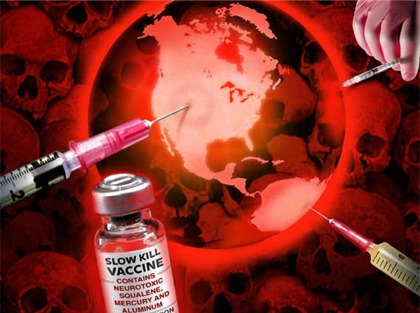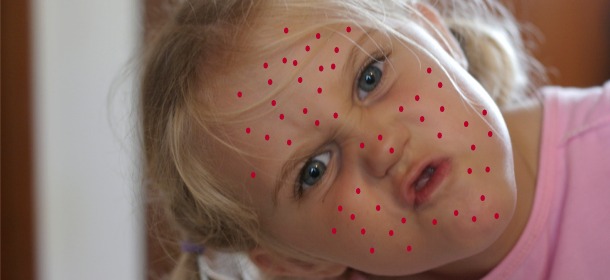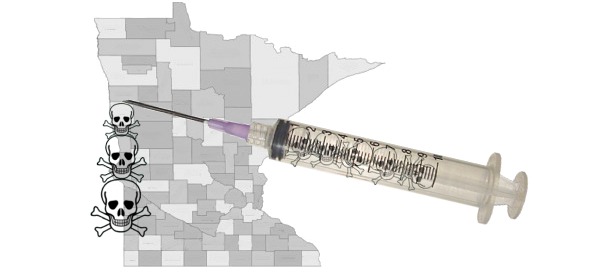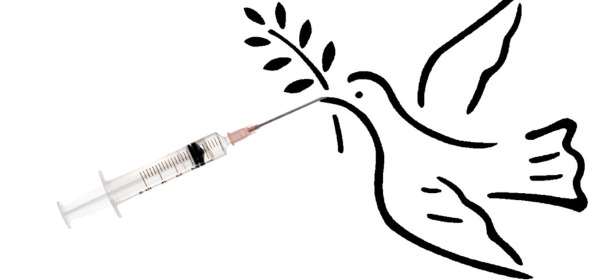Featured
More Pseudo Science to Give Another Vaccine: This Time It’s Shingles
More and more people are afflicted with life-sucking chronic diseases as a result of vaccinations. So, pseudo science is trying its best to deliver support for the party line: Find more reasons to give more vaccines more often.
by Heidi Stevenson
Shingles is a painful nerve disease that results from the same virus that causes chicken pox. It tends to strike people whose immune systems are compromised, such as those with rheumatoid arthritis, psoriasis, or Crohn’s disease. These are all autoimmune conditions and, as Gaia Health has documented, are associated with vaccinations. They are, in fact, largely caused by excessive vaccinating.
Therefore, the common response of health regulatory agencies has been to … give another vaccination?!!! That’s right. Logic is not a strong suit of these agencies. They’re set up to promote vaccinations, and they’re going to promote them no matter what the evidence shows.
Herpes zoster, Chicken Pox, and Shingles
Both chicken pox and shingles are caused by the Herpes zoster (HZ) virus. It was once a common and generally mild childhood disease that causes an itchy rash. In people who have either had chicken pox or the vaccine, it can manifest again later in life as shingles, which also includes a rash, but instead of covering much of the body, it runs along the path served by a spinal nerve root and causes pain instead of itching.
Silly Study
A new study published in the Journal of the American Medical Association (JAMA), Association Between Vaccination for Herpes Zoster and Risk of Herpes Zoster Infection Among Older Patients With Selected Immune-Mediated Diseases, attempts to document the need for and safety of a shingles vaccine in people over age 60. Unsurprisingly, it didn’t come up with much. Here’s their stated conclusion:
Receipt of HZ vaccine was not associated with a short-term increase in HZ incidence among Medicare beneficiaries with selected immune-mediated diseases, including those exposed to biologics. The vaccine was associated with a lower HZ incidence over a median of 2 years of follow-up.
So, they could not find an increase in shingles after the vaccine. That’s nice, but not terribly exciting. However, they claim to have found a lowered incidence of the disease. The question is, of course, how much lower? That’s where the study starts to look suspicious. They did not report their results in terms of how likely any one individual might come down with the disease. Instead, they reported their results in terms of person-years. Do you live in terms of person-years, or do you live in terms of years? As we’ll see, using person-years gives an impression of much greater benefit than is actually provided.
The study states:
In the United States, the incidence rate of HZ in the unvaccinated general population 50 years or older is estimated to be 7.0 cases per 1000 person-years. A live attenuated vaccine reduces HZ risk by 70% and 51% among immunocompetent individuals 50 to 59 years and 60 years and older in 2 randomized blinded trials, respectively.
7.0 cases per 1000 person-years. That gives the impression that there’s a high risk of developing shingles if you don’t accept the shingles vaccine. Reducing the Herpes zoster risk by 51-70% sounds like a big deal, but what does it actually mean in terms of the likelihood of getting shingles? Health Sciences Institute did the math and found that 175 people must be vaccinated to prevent one case of shingles.
That’s 174 people who must take the risk of the vaccine so that 1 person is protected from shingles.
Worse, the study only followed patients for 2 years. We already know that the chicken pox – shingles vaccine is temporary, but we don’t know how temporary. More and more vaccine repetitions are being added to the recommended dosage list as the reality that they neither last a lifetime—as had once been promised without a shred of evidence—nor that they’re all that effective.
In the case of Herpes zoster vaccine for shingles, they’re effective only 61% of the time! So, if you do get the vaccine after the age of 60, as the study’s scientists suggest, then you really don’t know if you’re protected or not. But you do know that your risk of developing a chronic autoimune disorder has increased, or if your immune system is already deranged, then you may be making it worse.
Conflicts of Interest
Such nonsensical results are unsurprising in light of the massive conflicts of interest that the paper’s authors disclose:
- Jie Zhang, PhD (one of the lead authors): research support from Amgen.
- Jeffrey R. Curtis, MD, MS, MPH (another lead author): research grants and consulting fees from Amgen, UCB, Abbott, Genentech/Roche, Centocor, BMS, and Merck.
- Elizabeth Delzell, ScD: research support from Amgen.
- Kevin L. Winthrop, MD, MPH: consulting fees from Pfizer, Amgen, UCB, and Abbott and grants from Pfizer.
- James D. Lewis, MD, MSCE: research grants from Centocor, Takeda, and Shire and having served as a consultant for Amgen, Abbott, Pfizer, and Millennium Pharmaceuticals.
- Kenneth G. Saag, MD: consulting fees from Merck.
- John W. Baddley, MD, MSPH: consulting fees from Abbott and Merck.
Pseudo Science and Shingles
Shingles is surely a miserable condition to have. That cannot—and should not—be argued. It is, though, a disease of older people and largely ones who are immune compromised. The particular diseases included in the study were rheumatoid arthritis, psoriasis, psoriatic arthritis, ankylosing spondylitis, and inflammatory bowel disease. All of these have been growing more and more common as the rate of vaccines has increased. Research now clearly shows that all of these are associated with, if not outright caused by, vaccines—and the more vaccines given, the more likely any individual will be afflicted with at least one of them.
Consider, too, that these are only a fraction of the total number of autoimmune diseases—but they weren’t included in the study. That is yet another fact skewing the results. What disorders were suffered by those the authors deemed unaffected by autoimmune disorders? And how did they affect the results? How can this study be considered anything but pseudo junk science?
Now we’re in a situation where we can expect more and more cases of shingles because more and more people are afflicted with life-sucking chronic diseases that have resulted from vaccinations. So, pseudo science has been hired and is trying its best to deliver support for the party line: Find more reasons to give more vaccines more often.
And, y’know, bless their little hearts, those scientists are doing their very best! Those scientists are certainly well motivated. The kind of money they get for producing pseudo science to support what their masters want must be worth it. It seems that, no matter how ridiculously weak the study is, they’ll spin it whatever way their masters want.
Of course, the pseudo public health agencies jump on it and push for everyone to get yet another vaccine. In this case, it’s a vaccine for shingles, which will likely increase the burden of chronic disease that’s the primary reason behind most cases of shingles.
Sources:
- Association Between Vaccination for Herpes Zoster and Risk of Herpes Zoster Infection Among Older Patients With Selected Immune-Mediated Diseases
- Shingles Vaccine Safe for Those With Autoimmune Diseases: Study
- Study Supports Wider Use of Shingles Vaccine
Tagged big pharma, chicken pox shingles, evidence-based medicine, herpes zoster, herpes zoster chicken pox, herpes zoster shingles, pharmaceutical drugs, pharmaceuticals, pseudo-science, pseudoscience, shingles, shingles vaccination, shingles vaccine, vaccine, vaccines
Related Posts
-
Kmiller
















